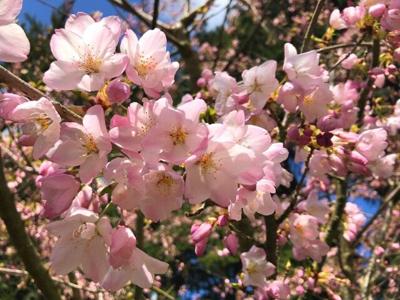Something special happened in the garden this last week. We experienced the vernal equinox, a time when we receive exactly 12 hours of daylight and 12 hours of night (although I have just learned that this actually happened two days earlier on the vernal equilux, something that takes into account atmospheric refraction and latitude, but let’s not confuse the issue with facts).
Once we hit this spot, when our day lengths start to exceed our night lengths, we can expect to experience magical things happening in the garden. Visually, it is obvious, there is new growth and spring flowers all around us. But also, on a higher level of consciousness if you will, there is a heightened state of energy, as if the electrons are moving much faster. I felt it last week in the form of my own energy and enthusiasm and it gave me a new sense of purpose. I am pretty sure I have a case of Spring Fever.
As it turns out, Spring Fever is very much a real thing. It all has to do with the increase of light and our body’s reaction to that change. Located deep in our brains, in the epithalamus region, is the pineal gland — a small pine cone shaped gland about the size of a pea. It is a part of the endocrine system that helps to regulate melatonin, which is a chemical (mostly produced in the brain) that helps the body sleep at night. During the long dark winter months, the pineal gland is busy producing lots of melatonin, the result of which is that we feel lethargic and sometimes even depressed (look up S.A.D., or Seasonal Affect Disorder). Much to my chagrin, we also tend to put on weight by stuffing our faces with large helpings of carbohydrates. As the days get longer in the spring, the production of melatonin decreases and is replaced with an increase of serotonin. Serotonin acts like a mood enhancer and thus we start to feel happier and more energized (and hopefully start to shed some of those extra pounds).
Almost all animals have a pineal gland that regulates their circadian rhythms, but what about plants? Plants do not have an endocrine system in the same sense as animals. They do, however, still produce hormones that are transported throughout their vascular systems. These hormones control all the functions of the plant, including growth, reproduction and things like fall color and when they go dormant. This time of year, when we start to see rampant growth in our gardens, it is good to remember that this is a hormonal response to longer days and increased sunlight. Our plants are experiencing what is essentially a spring fever.
Spring Fever manifests itself in different ways for different people. Ask a school teacher and they will tell you that the kids are bouncing off the walls or have their heads in the clouds (more than usual). Ask a gardener and they will tell you that their fingers are twitching and yearning to be digging in the dirt. They may also be feeling an uncontrollable urge to visit the garden center and purchase new plants. These are all healthy reactions to Spring Fever, and admittedly ones that I highly encourage. Thankfully, there is no need for face masks or social distancing with Spring Fever. The best cure is to just embrace the feeling and immerse yourself in the glories of the spring garden until you are consumed by its wonder and beauty.
Steve Smith represents Sunnyside Nursery in Marysville and can be reached at [email protected].


(0) comments
Welcome to the discussion.
Log In
Keep it Clean. Please avoid obscene, vulgar, lewd, racist or sexually-oriented language.
PLEASE TURN OFF YOUR CAPS LOCK.
Don't Threaten. Threats of harming another person will not be tolerated.
Be Truthful. Don't knowingly lie about anyone or anything.
Be Nice. No racism, sexism or any sort of -ism that is degrading to another person.
Be Proactive. Use the 'Report' link on each comment to let us know of abusive posts.
Share with Us. We'd love to hear eyewitness accounts, the history behind an article.